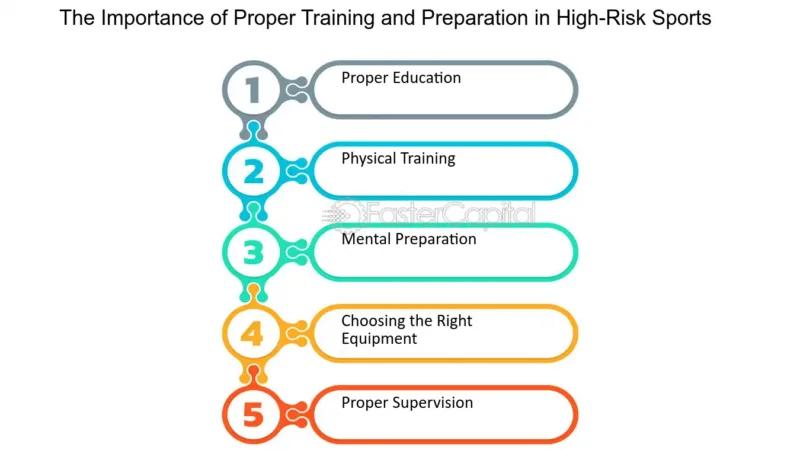From skydiving to rock climbing and base jumping, extreme sports captivate a unique breed of athletes who thrive on pushing the boundaries of human potential. For those outside this adrenaline-fueled world, it can be difficult to understand what motivates athletes to take such risks. However, behind the thrill lies a fascinating blend of mental preparation, risk-taking behavior, and the pursuit of psychological rewards that come from pushing both physical and mental limits. This article dives into the psychology behind extreme sports and explores why individuals are drawn to activities that involve high risks.
The Psychology of Risk-Taking
One of the most prominent questions surrounding extreme sports is: Why do athletes take such immense risks? Research in psychology reveals that there are several key factors that drive risk-taking behavior in extreme sports athletes.
- Adrenaline and the Thrill Factor: For many athletes, the rush of adrenaline is one of the most significant motivators. Extreme sports trigger the body’s “fight-or-flight” response, releasing adrenaline, endorphins, and dopamine, creating a powerful sense of euphoria. This rush can be highly addictive, as it provides athletes with a “natural high” that many report as being unlike any other experience.
- Personality Traits and Sensation Seeking: Psychologists have found that individuals who participate in extreme sports often score high in sensation-seeking behavior. Sensation seekers are drawn to novel, intense, and risky experiences because they derive pleasure from uncertainty and excitement. In fact, some athletes report that the fear and unpredictability of these sports make them feel more alive, creating a cycle where risk becomes a reward.
- Mastering Fear: For many, the allure of extreme sports comes from the opportunity to face and conquer fear. This psychological challenge can be deeply satisfying, as athletes develop the mental resilience to push through moments of intense fear or discomfort. By mastering fear, athletes build self-confidence, which can translate into other areas of life.
Mental Preparation and Psychological Strategies
Participating in extreme sports requires intense mental preparation. Athletes must manage their fear, focus on the task at hand, and stay calm under pressure. There are several psychological strategies that extreme athletes use to prepare for high-risk situations:
- Visualization: Visualization is a common technique where athletes mentally rehearse the steps involved in their sport. For example, rock climbers may visualize their entire climb before starting, imagining how they’ll tackle each obstacle, where they’ll place their hands and feet, and how they’ll manage fatigue. This practice helps reduce anxiety and creates a sense of control over the situation.
- Mindfulness and Flow States: Extreme sports often require athletes to enter a state of “flow”—a mental state where they are fully immersed and focused on the task. Achieving flow allows athletes to block out distractions, manage fear, and react instinctively. Mindfulness practices, such as meditation or breathwork, help athletes achieve this heightened state of awareness, allowing them to perform at their peak.
- Risk Management and Acceptance: While extreme sports are inherently risky, athletes must balance their passion for the sport with careful risk management. Mental preparation often involves acknowledging the risks, understanding the consequences, and taking steps to mitigate danger. Athletes spend time preparing mentally for both the best- and worst-case scenarios, ensuring they remain calm if things don’t go as planned.
The Psychological Benefits of Extreme Sports
While the risks are high, so too are the rewards. Many athletes report that participating in extreme sports has significant psychological benefits:
- Stress Relief and Mental Clarity: One of the surprising benefits of extreme sports is their ability to alleviate stress. While the activities may seem stressful to outsiders, athletes often experience mental clarity and a sense of calm when they’re fully immersed in the sport. The intense focus required to succeed in these activities can block out everyday worries, allowing athletes to feel more present and in control.
- Increased Confidence and Resilience: Conquering a high-risk challenge boosts self-esteem and builds mental resilience. Athletes who regularly participate in extreme sports develop a strong sense of self-efficacy—they learn to trust their abilities and adapt to difficult situations, which can improve their overall confidence in life.
- A Sense of Accomplishment: Successfully completing an extreme sport, whether it’s a skydive or a long climb, provides a deep sense of accomplishment. Athletes often describe these moments as life-changing experiences that fuel their desire for more. The satisfaction that comes from achieving what once seemed impossible is a driving force for many athletes.
How Extreme Athletes Manage Risk
While extreme sports involve significant risk, athletes employ several strategies to manage those risks effectively. These include:
- Training and Experience: The foundation of risk management in extreme sports is preparation. Athletes undergo extensive training and accumulate experience over time, allowing them to develop the necessary skills to handle high-pressure situations.
- Equipment and Safety Protocols: Using the right equipment and following strict safety protocols are essential components of risk management. Athletes ensure their gear is top-quality, whether it’s parachutes for skydivers or ropes and harnesses for climbers. They also train to follow emergency procedures and safety checks to minimize the chances of accidents.
- Calculated Risk-Taking: Extreme athletes don’t take risks blindly. Instead, they carefully evaluate each situation and decide whether the risk is worth taking. While they may push their limits, they also have a deep respect for the dangers involved in their sports. Knowing when to back down is a key skill that keeps athletes safe.

Conclusion
The psychology behind extreme sports is a fascinating mix of risk-taking, mental preparation, and reward-seeking behavior. While outsiders may question the dangers involved, athletes are motivated by the adrenaline, personal growth, and mental benefits that come with pushing themselves to their physical and psychological limits.
As they manage risk and conquer fear, extreme athletes unlock new levels of self-confidence and clarity, making these high-adrenaline sports an integral part of their lives.

Leave a Reply